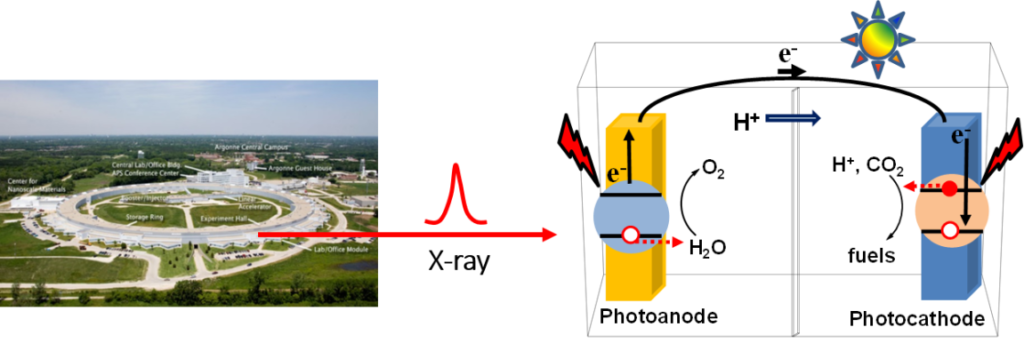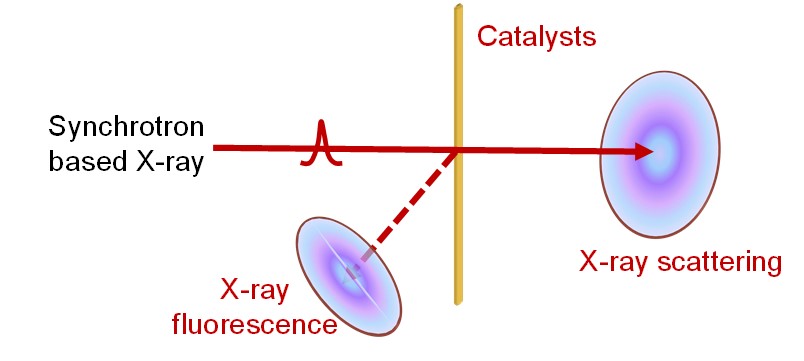The major theme of our research is focused on the development of cutting edge materials for various chemical reactions and applications in sustainable energy source. This effort involves the design, synthesis, and spectroscopic characterization of hybrid porous and semiconducting materials, with our aim to correlate the structure of these materials with their photophysical and photochemical properties. Currently, we are investigating new hybrid materials including covalent organic frameworks (COFs), metal organic frameworks (MOFs), zeolitic imidazolate frameworks (ZIFs), and semiconductor nanocrystals. The hallmark of our research program is the close integration of materials design and synthesis with advanced time resolved and in situ spectroscopic techniques, which allows us to probe the unknown and underexplored structure/function relationships of the hybrid materials.
1. Design and Structural Analyses of porous hybrid materials for Solar to fuel conversion
While there is a well-recognized need to develop efficient photocatalysts for the production ofcarbon-neutral and sustainable fuel sources by solar energy conversion, the successful design of such catalysts requires a fundamental understanding of the mechanisms during the catalytic reaction. Despite recent progress in understanding the nature of photocatalysts, it remains a challenging task to directly link their structure with catalytic function during the catalysis event, because of the difficulty in identifying and characterizing, in real time, the multiple transient states that ultimately determine function. The Huang group efforts in this area include: 1) Design hybrid photocatalysts based on porous crystalline materials such as ZIFs, MOFs, and COFs; 2) Fundamental understanding of charge separation and structural dynamics of the designed photocatalysts using advanced time resolved spectroscopy; 3)In situ structural characterization of the photocatalysts under standard catalytic conditions.

2. Fundamental mechanistic studies on semiconductor films for PEC or EC
Inspired by natural photosynthesis, a typical artificial water splitting cell involves two separate photoelectrodes; a photoanode for oxidation of water to form O2 (OER) and a photocathode for proton reduction to produce H2 (HER). Each catalytic photoelectrode includes several key steps that together determine the efficiency of the cell, including light absorption, charge separation, and finally utilization of the photogenerated carriers to drive the appropriate half-reaction for water splitting. While many of such photocatalytic systems have been developed to date, they typically suffer from either stability or efficiency issues that impact their viability in actual devices. The goal of this research program is to uncover the mechanistic origins of these processes and use this information to guide the development of more efficient and stable hybrid semiconductor photoelectrodes using real time spectroscopy.

3. In situ structural characterization of homogeneous and heterogeneous catalysts
The goal of the research is to improve our fundamental understanding of the catalytic mechanism involved in organometallic chemistry and hydrodesulfurization process. We seek to synthesize homogeneous transition metal complexes and heterogeneous catalysts and examine their selectivity and activity as catalysts for various chemical reactions. In this work, we use real time and time resolved synchrotron based X-ray techniques to address the issue of directly correlating the structure of the catalysts with their function for catalysis. These studies will provide guidance for rational design of cutting edge catalysts with high efficiency and selectivity.

